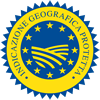Description
The Fagiolo di Sorana PGI refers to the dry White or Red bean of the leguminous plant belonging to the botanical species Phaseolus vulgaris L.
Production Area
The production area of Fagiolo di Sorana PGI is within parts of the territory of the Municipality of Pescia, in the areas east and west of the Pescia di Pontito river, in the Province of Pistoia, in the Tuscany region.
Production Method
The soil in which Fagiolo di Sorana PGI is grown is rich in sand and gravel, and covers several hectares along the Pescia river (the so-called ghiareto). The terrain must be easy to irrigate with the surface and stratum waters from the hydrographic basin of the Pescia di Pontito. The base and top fertilizers are mostly organic. After the soil has been tilled by machine or by hand, it is sowed with local seeds during the period of the last moon in May. Harvesting is carried out manually between August and September, when the dehiscence of pod valves is almost complete. The beans are then sun-dried for 3-4 days. Once dried and shelled, the beans are placed on a table and covered with a green cloth so that they are visible, after which they are hand-selected by removing any stained and malformed seeds. Products that are not immediately packaged are stored in special glass or plastic food-grade containers, together with pepper corns, valerian roots or bay leaves to deter insects.
Appearance and Flavour
Fagiolo di Sorana PGI has an uneven and flattened shape (hence the characteristic name piattellino) and is much smaller than the common white bean. The milk-white integument with light pearl-white marbling that turns a characteristic pink colour after cooking, is imperceptible on the palate. It is highly digestible and has a delicate flavour. The red bean (locally known as Antico rosso) is a long and almost cylindrical shape. It has a delicate wine-red integument with darker streaks and a stronger, more savoury flavour, although it is still highly digestible.
History
Thanks to the reclaimed land commissioned by the Medici family and the Grand Dukes of Leopold, Fagiolo di Sorana PGI found its ideal environment in the Pescia area. This legume has seduced renowned people such as Gioacchino Rossini, Edmondo de Amicis, Giuseppe Verdi, Giuseppe Garibaldi, Giacomo Puccini and Pius XI. More recently, in the 1990s, Indro Montanelli effectively intervened in the battle waged by producers and the local community for the Protection of the production area of the Sorana bean. In fact, at the beginning of the 1980s, bean cultivation was almost extinct due to the depopulation of the area after the First and Second World Wars. The recovery of its cultivation is given to the initiative of the non-profit Ghiareto Association of small producers in Sorana, which by promoting the recognition of the PGI, encouraged producers to cultivate the long-abandoned land.
Gastronomy
Fagiolo di Sorana PGI should be kept in a cool, dry place. Cooking does not alter its nutritional value. To preserve their quality and maintain their delicate flavour, it is best to soak them in room-temperature water the night before cooking, and to then boil them slowly in the same water, preferably in a glass flask with a large opening, which in Pescia is known as a gozzo, or in a traditional earthenware pot. Once boiled, the beans should be seasoned with extra-virgin olive oil, a pinch of salt and white pepper.
Marketing
The product is marketed as Fagiolo di Sorana PGI Bianco or Rosso. It is sold in glass recipients or plastic food bags, of variable weights and sizes, obligatorily sealed and labelled.
Distinctive Features
Fagiolo di Sorana PGI owes its soft pulp and strong, decisive flavour to the extraordinary microclimate of the production area, which is characterised by little sunlight and heavy dew during the night.





























